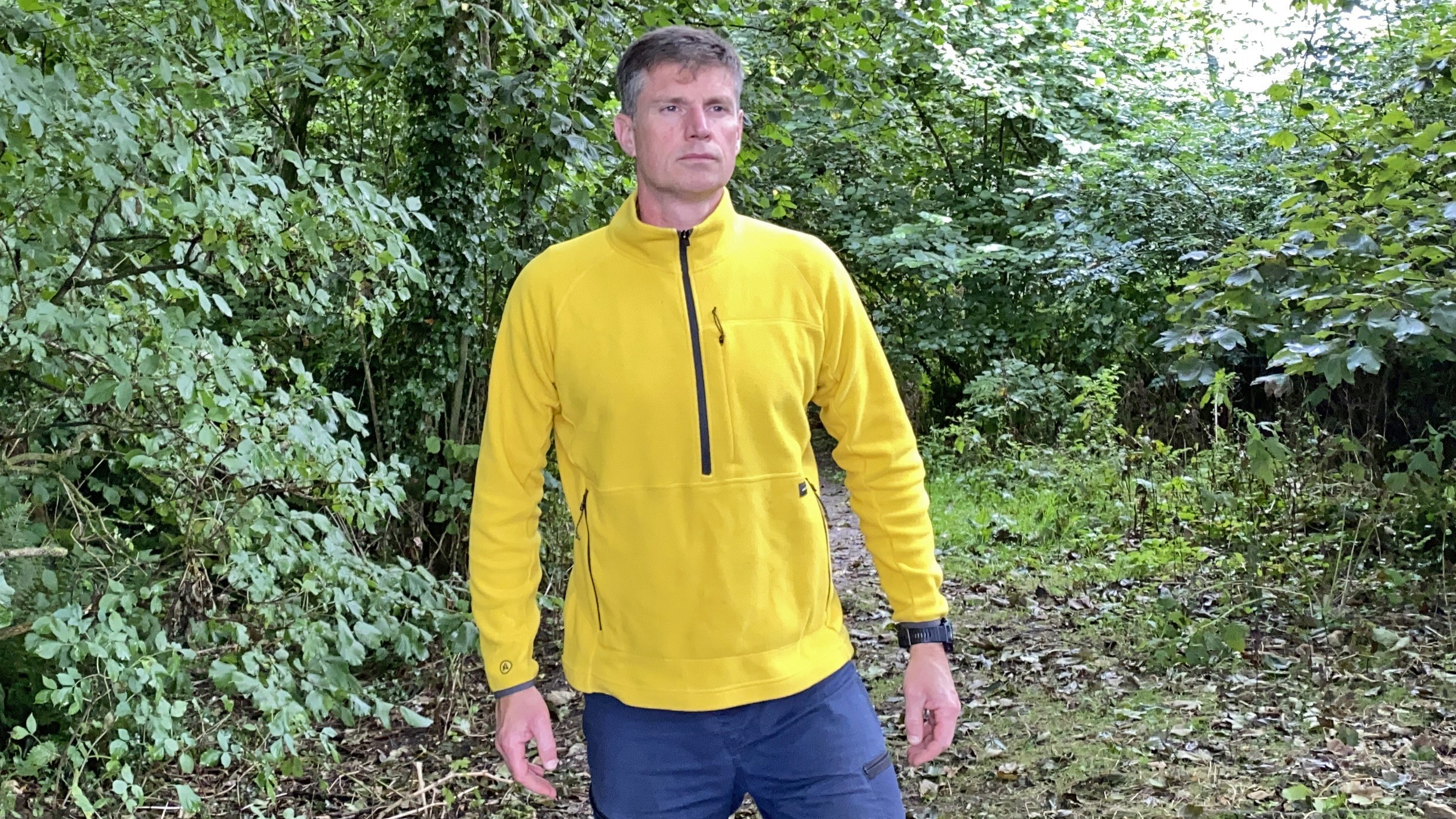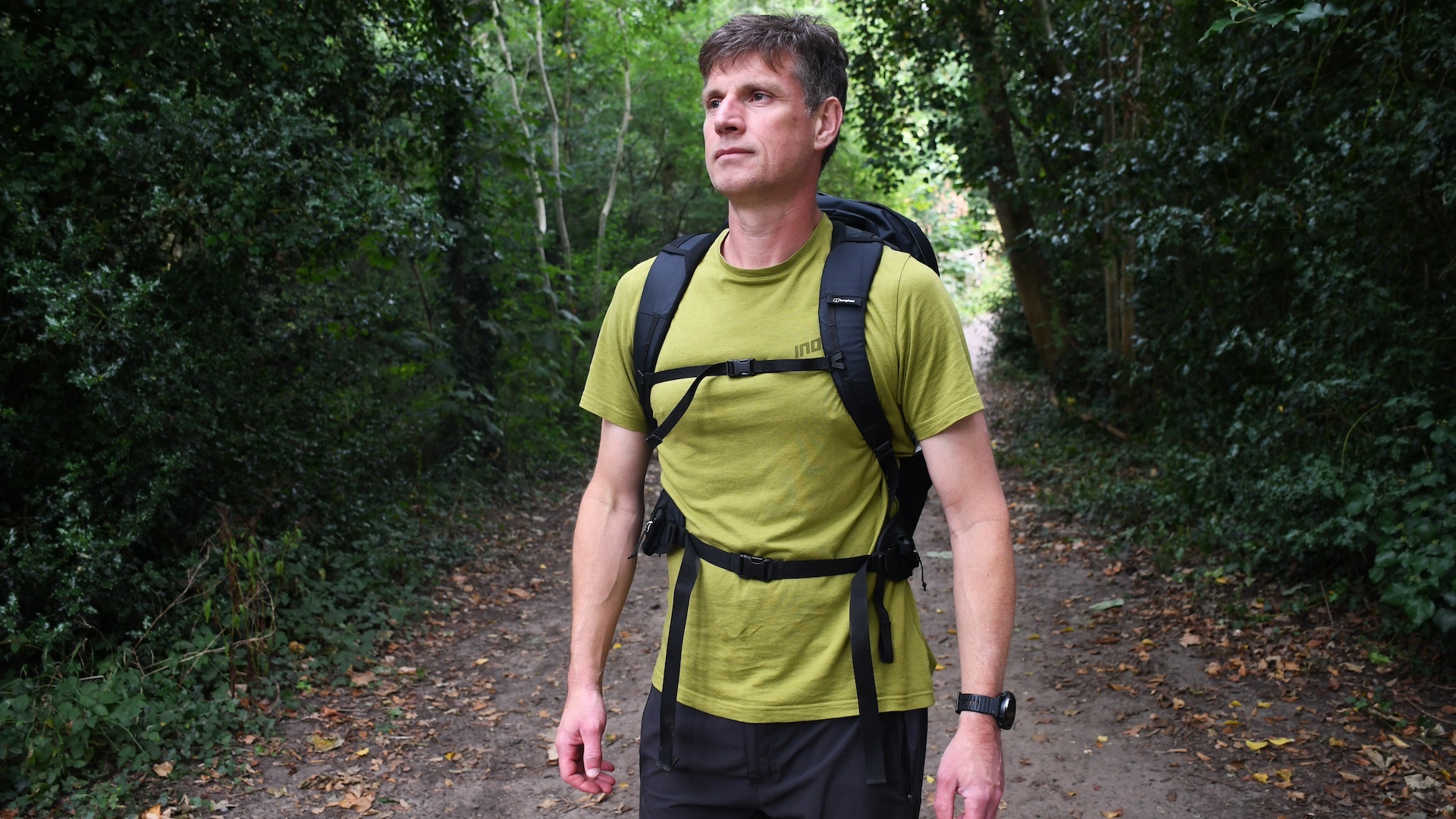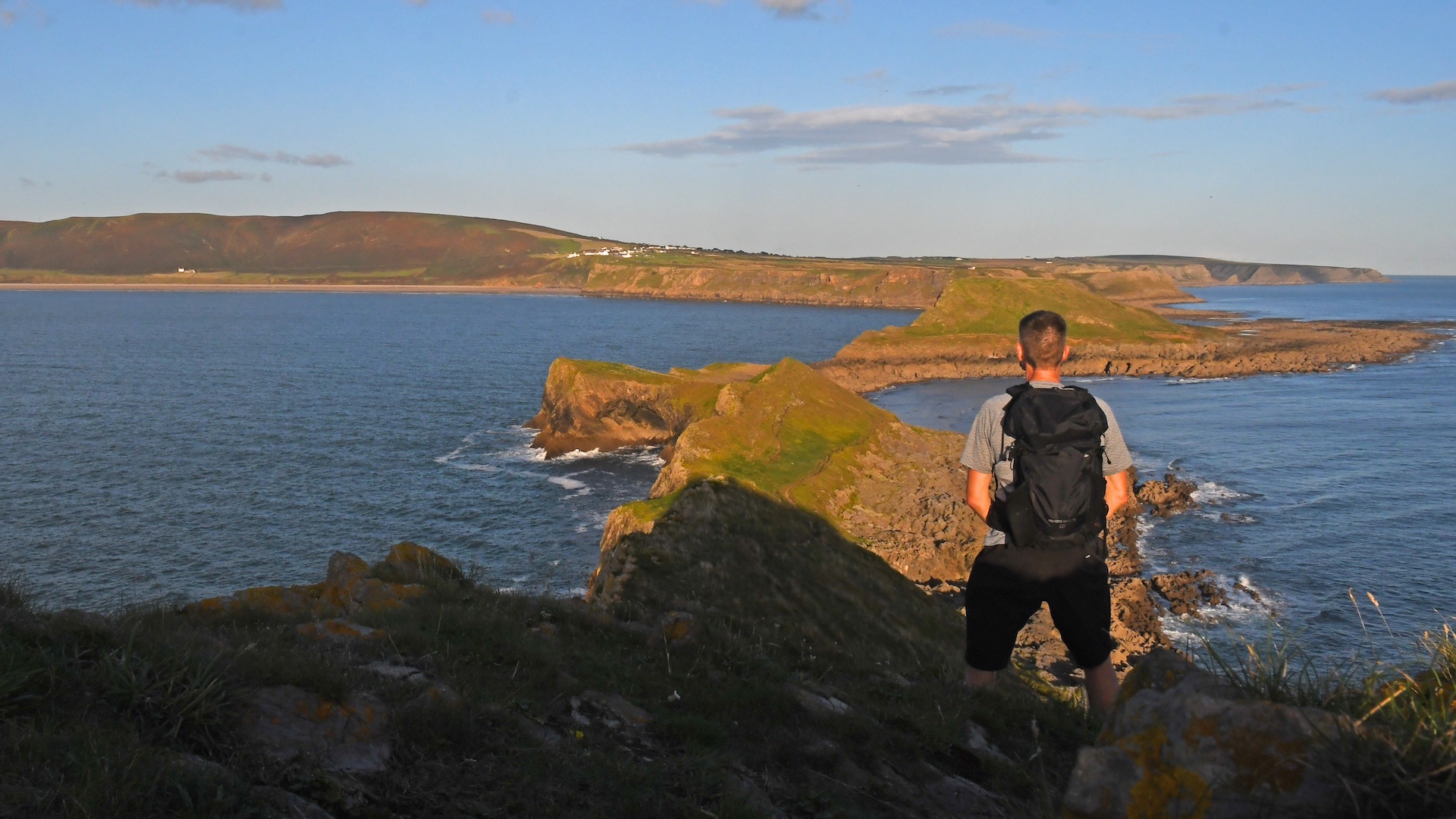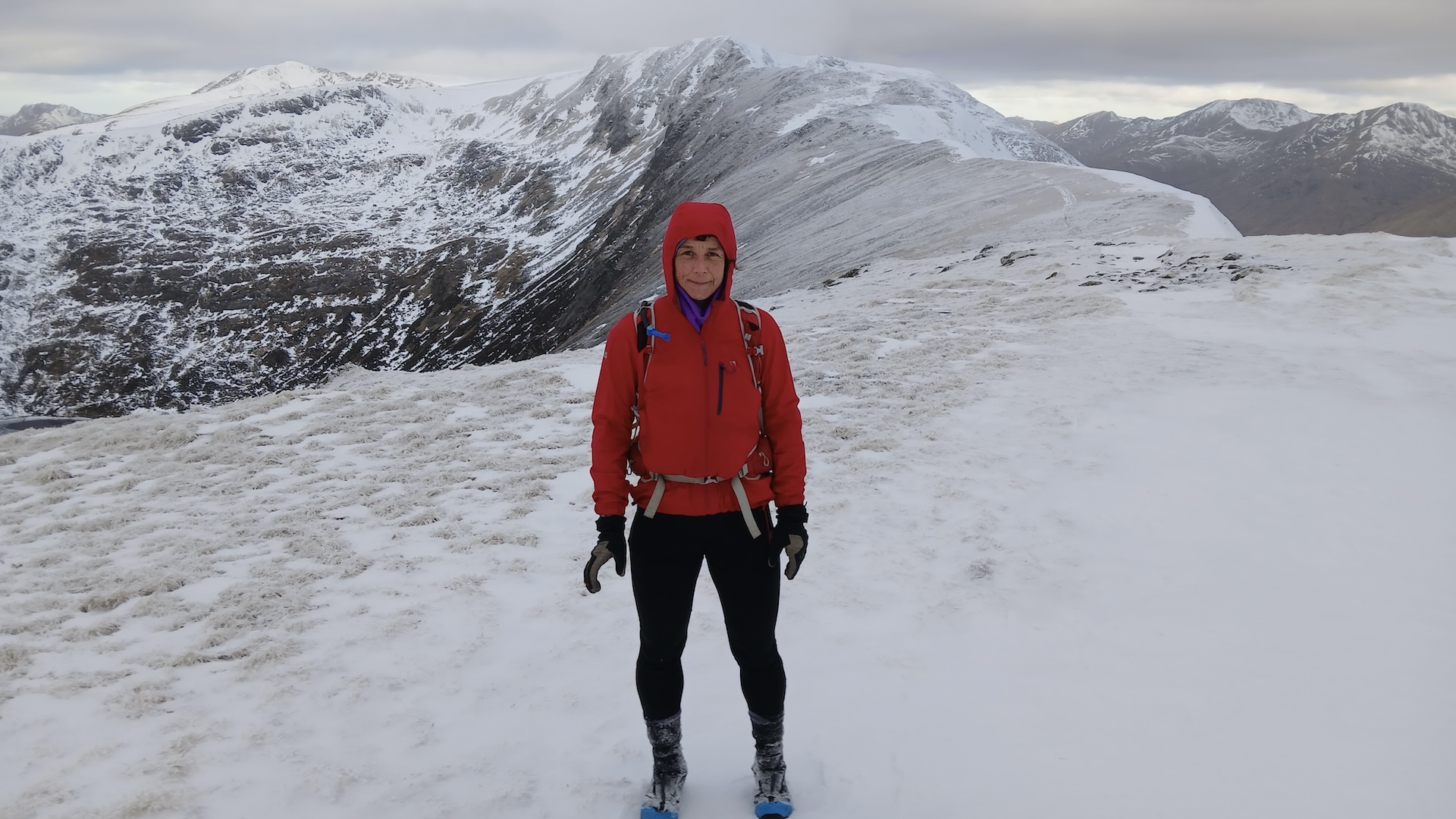Advnture Verdict
A highly functional and very versatile backpack, the Berghaus Remote Hike 35 has some excellent design elements, including a really useful side zip on the primary compartment, great compression straps and excellent storage capacity. Easy to adjust, it can be used by multiple people in the same household for all sorts of adventures. It’s also pretty weatherproof, and robustly made, but I did find the ‘Bivi’ opening system frustratingly fiddly, and the ‘Flow’ back ventilation setup didn’t quite live up to expectations.
Pros
- +
Capacious main compartment
- +
Good, comfortable harness
- +
Easy-to-adjust setup
- +
Excellent pocket storage, including a large, easy-access rear pouch
- +
Water resistant
- +
100% recycled polyester lining
- +
Reflective logo on rear
Cons
- -
Fiddly main opening system
- -
Back ventilation not brilliant
- -
No rain cover
You can trust Advnture
Meet the reviewer

Pat has hiked all over the world, his adventures taking him to Mont Blanc, the roof of Western Europe; the Norwegian Alps; the highest peaks in Australia; and New Zealand’s Great Walks – among others. He’s an experienced tester of hiking footwear and gives each pair a thorough thrashing before reviewing.
Berghaus Remote Hike 35: first impressions

British brand Berghaus have a long history of producing down-to earth products for the outdoors that prioritize function over form, placing more importance on how equipment performs in the wilds than how it looks when you’re back in town – which is the right way to go about things in my opinion. I’ve enjoyed using a wide range of Berghaus kit over the years, so I was looking forward to testing this 35-liter pack.
• List price: £110 (UK) / €120 (EU) / Not currently officially available in the US
• Weight (empty): Men’s: 1,020g / 2lb 4oz
• Size (HxWxD): 60cm x 28cm x 22cm / 22.5in x 11in x 8.5in
• Gender specificity: Unisex
• Materials: Main: PFC-free nylon 200D ripstop and PFC-free plain polyester 600D, with a water-resistant PU membrane; Lining: PFC-free, 100% recycled polyester 150D with a water-resistant PU membrane
• Colors: Black / Blue / Goji Berry & Red Dahlia
• Best for: Big day walks, hut hiking, lightweight weekend camping trips, commuting, travel
With its generous carry capacity, the Berghaus Remote Hike 35 is a large daypack that can also be used as a hiking backpack for overnight adventures if you’re traveling light, or for even longer if you’re trekking from hut to hut carrying just a sleeping bag liner and spare clothes. It’s certainly large enough to take a lightweight two-season sleeping bag, an inflatable camping mat and a one-person tent, plus a compact camping stove and enough kit to see you through a two- or even three-day escapade. It also has a water-resistant outer and can potentially be used as a commuting bag.
I like a pack with this sort of versatility, and when it first arrived I was pleased to see that in addition to a spacious main compartment, the Berghaus Remote Hike 35 also has good pocket storage. This is a unisex pack, which is only available in one size, but it’s very easy to adjust according to your torso length and body shape. I can’t speak for everyone, but I personally found it simple enough to get a comfortable fit.
Berghaus Remote Hike 35: design and materials

The main section of the Remote Hike 35 backpack from Berghaus is constructed from a mixture of ripstop nylon and polyester (both PFC-free), with a water-resistant membrane used to make it, if not fully waterproof, at least capable of keeping your kit dry in damp and drizzly conditions. There’s no rain cover, as this has been deemed surplus for requirements, so if you are heading out in potentially torrential rain, then it’s a good idea to pack essentials in a dry bag.
As mentioned, the back panel is adjustable and can be changed from the Small setting through Medium to Large, according to the user’s requirements. The harness features dual-density foam in the arm straps, and the hip belt is pre-curved for a snug fit – harness, hip belt and sternum straps are all quick and easy to adjust. The ‘Flow’ system used, which combines mesh with a concave, semi-rigid back panel, maintains a small space between your back and the pack – intended to promote airflow, cut down on sweating and improve comfort levels.
The large main compartment is accessed by what Berghaus call a ‘Bivi System’, which sees the hood flipping forwards so you open the pack from the back (near the top of the harness). Presumably, this is a security feature, to make the pack harder for thieves to open when you’re travelling in cities, but I’ll get into more detail about this later.
Beside the capacious main compartment, this pack boasts a large easy-access rear pouch with a pull-tab, an inner and outer pocket in the hood, two water bottle pouches (one on either side) and a pair of zipped pockets on the hip wings – all of which make the real carry capacity of the bag a lot more than 35 liters. When it’s not full, however, there are several compression straps that allow you to keep the pack nice and compact.
There are also multiple hoops and loops on the Remote Hike 35, so you can attach everything from trekking poles and ice axes to bike or climbing helmets. There is no internal sleeve for a hydration bladder, but you can slide one behind the back panel, where a Velcro hook keeps it in place. A reflective logo on the rear helps you stay visible to vehicles on lanes and roads after dark.
Berghaus Remote Hike 35: on the trails

I’ve been using the Berghaus Remote Hike 35 extensively over the last three months, mostly while doing long day walks in the peaks and valleys of England, Scotland, Wales and Ireland, but also for urban travel and the occasional overnight outing.
I’ve been impressed by the pack’s storage volume – you can get a lot of stuff in this bag, and the various pockets and pouches allow you to organize your kit really well too. The rear pouch is perfect for stuffing wet weather gear (waterproof shell jackets and rain pants) into, both before and after you’ve used them, and the little zipped hip-wing pockets are good for holding snacks, a phone, compass and other things you might need to access often. The external hood pocket is ideal for a head torch, a hiking hat and gloves, and the interior pocket can be used to safely store valuables.

My main beef with this bag is with the ‘Bivi’ opening system, which requires you to flip the hood forwards (the opposite way to most packs) before you can loosen the pull cord that secures the main compartment shut. No matter how often I used this bag (and I’ve been taking it out pretty much daily for months now) I just never got used to this back-to-front system, and always found myself undoing one of the compressions straps by mistake. I admit, this could be more of a reflection on me than the bag, but I just don’t understand why the pack has been designed this way. If it’s to improve security (by stopping people from opening your pack while you’re on public transport for example), then this is rather undermined by the fact that a side zip grants easy access to the main compartment (a feature I actually appreciated much more than the so-called ‘quick-access’ Bivi system).
The harness is decent, and the pack is comfortable to carry whether it’s fully loaded or half empty (the compressions straps do their job very nicely, although there are a lots of straps and cords on this pack, which feels a bit busy at times). However, I did end up with a very sweaty back on some occasions, when working hard in the hills, and I’m not convinced that the Flow system on this pack allows enough air to permeate through – the sides are snug to your back, so while there is a (pretty small) gap between your body and the bag, air doesn’t actually flow through it very effectively.

Author of Caving, Canyoning, Coasteering…, a recently released book about all kinds of outdoor adventures around Britain, Pat has spent 20 years pursuing stories involving boots, bikes, boats, beers and bruises. En route he’s canoed Canada’s Yukon River, climbed Mont Blanc and Kilimanjaro, skied and mountain biked through the Norwegian Alps, run an ultra across the roof of Mauritius, and set short-lived records for trail-running Australia’s highest peaks and New Zealand’s Great Walks. He’s authored walking guides to Devon and Dorset, and once wrote a whole book about Toilets for Lonely Planet. Follow Pat’s escapades on Strava here and Instagram here.

